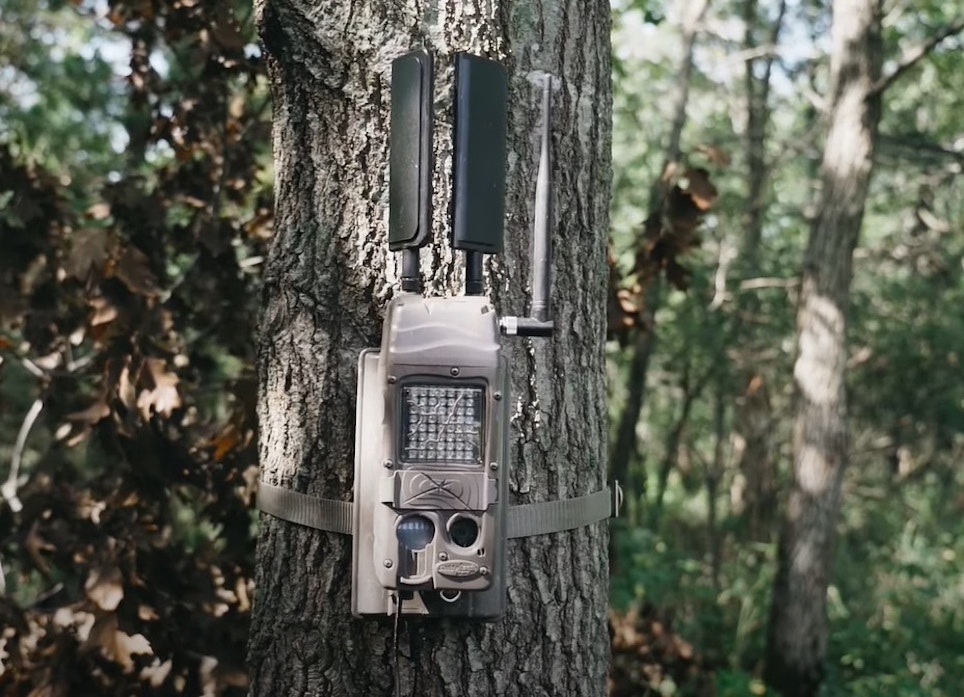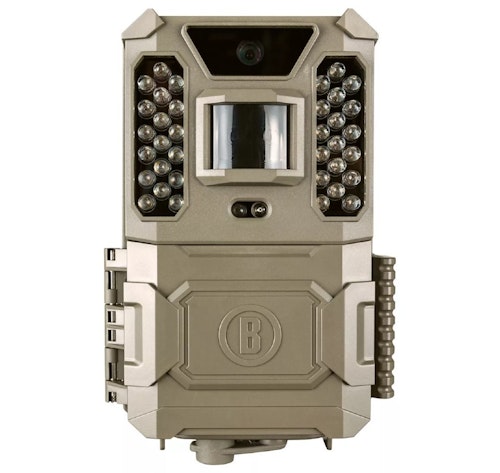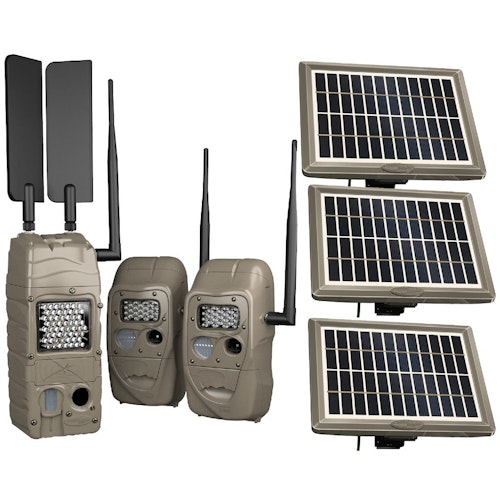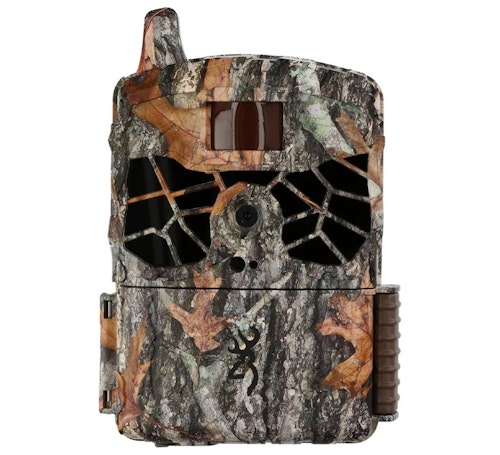Like most other technologies, trail cameras for monitoring deer and other wildlife have come a long way in the past 30 or 40 years. Back in the 1980s when I first began using such technology to gain a little extra insight into the whitetail population on my hunting areas, shutter speeds were so slow and triggers so inefficient that many times we’d rush home from the film processor only to have mostly pictures of nothing, with a few blurry, black-and-white photos of deer butts as the animals walked out of the frame. And that was only if the batteries in the cameras hadn’t run out of juice before a deer walked by and we had set up the complicated devices correctly. Many times, on a trail rife with deer signs, my cameras hadn’t taken a single picture.
Fast forward to the present, and some of the photos taken by modern trail cams are absolutely stunning. Not only are many very high-resolution, but high-definition video is also a common feature of many newer models. Of course, you don’t have to process the film — just download the images to your laptop or an SD card reader. And increasingly, newer models allow you to have images sent directly to your computer or smartphone without even having to set foot in the woods and spook your quarry. Of course, that’s a little more expensive, but some hunters are more than willing to pay for the convenience of real-time surveillance of their favorite hunting spots.
Such high quality and efficiency has led to trail cams being used for much more than just hunting and scouting purposes. Many people used them for home surveillance, to watch property they are not close enough to in order to monitor in person on a regular basis, or even to figure out what kind of varmint has been raiding their henhouse.
Fact is, nowadays just about anybody walking into your retail establishment could be a potential trail camera customer. That said, let’s take a look at a few good models that could give you a leg up in hunting sales this year.
Bushnell By Primos Prime Low Glow
This little trail camera is the definition of simplicity, yet it yields some really great results for those wanting to keep an eye on their favorite feeder or trail. Adjustable settings allow the user to capture one to three images per trigger, or anywhere from five to 60 seconds of HD video. The trigger easily adjusts from one second to 60 minutes to give users flexibility on how many photos they want to take at a given time.
Don’t confuse this camera with some of the slow budget-minded models on the market. It features a 0.3-second trigger speed with a quick one-second recovery rate. Plus, its 80-foot flash range will reach out to get pictures of animals that are not within range of many cameras.
The camera gives users full-color, high-resolution images settings of 3mp, 12mp and 24mp. Plus, it puts the date, time and temperature on every image. It is also very easy to operate, and settings can be changed without removing it from the tree or wherever else it is mounted.
The 24mp resolution and automatic day/night sensor deliver crisp, vivid images in daylight or dark. Plus, this unit operates on six AA batteries (included), and the package even contains a 16GB SD card, so it’s ready to head to the woods right out of the box. The premium nylon strap with steel buckle will withstand years of use.
Of course, this model won’t send photos and videos right to a hunter’s phone or computer like some will. But it’s an overall solid performer at a very competitive price, with no add-on costs like cell service, which is required for many.
Cuddeback CuddeLink Cell
Cuddeback is a premier name in trail cameras, and the company has been offering some of the best-quality trail cams since 1989. So, it should come as little surprise that the company’s latest cellular-enabled trail cams are among the best on the market today.
The Cuddelink Cell is one of the company’s most advanced trail cams. It features LTE service, .25-second trigger time, a very long battery life and high-resolution, 20mp images. Cell service starts at a very reasonable price for real-time images. Plus, the CuddeLink Cell utilizes CuddeLink technology to allow up to 24 cameras to share one cell plan. Note that CuddeLink is not cell service or Wi-Fi. Rather, it is a proprietary wireless mesh network that allows trail cameras to communicate with each other. CuddeLink transmits images from remote cameras to a home image collection camera.
Cuddeback’s patented Power House technology uses super capacitors to store energy, allowing the camera to deliver three times the power to the LEDs. The result is more range, better image quality and less blurred motion. Along with the aforementioned 1/4-second trigger speed, super-fast recovery speed assures the trail cam is ready for the next picture within one second of taking the first. Plus, each picture is imprinted with date, time, moon phase and camera ID. Multiple use modes range from simple setup and use in EZ mode to advanced modes that give the user more control over the camera’s settings.
Cell service from either AT&T or Verizon is required. Plans start at about $10 a month for up to 750 pictures, going up to about $30 a month for unlimited images. Note that the Cuddeback CuddeLink Cell is available individually or in multi-camera starter kits, which come complete with high-gain antennas, mounting brackets and straps.
Browning Defender Ridgeline
It’s easy for hunters to keep an eye on their remote hunting plot with the Browning Defender Ridgeline Wireless Cellular Trail Camera. Transmitting HD images and video clips over a nationwide 4G LTE network from hunting spots right to the user’s laptop or mobile device using the Strike Force Wireless Management System, this trail camera boasts an 80-foot detection range and 90-foot flash range. When triggered, it snaps crisp 20mp images and 1080p videos ranging in length from five seconds to two minutes.
The Defender’s multi-shot and burst modes fire off up to eight shots with an adjustable one-second to 60-minute delay. The ultrafast trigger speed is easily adjustable from .135 seconds to .7 seconds and includes three modes — power save, long range (120-foot low-glow IR illumination mode) and invisible flash (80-foot invisible IR illumination mode) infrared flash modes for increased reliability. It is powered by 16 AA batteries or a 12-volt solar power source, and the camera accepts up to 512GB memory cards for plenty of onboard data storage.
Other interesting features include the ability to automatically upload thumbnails, HD images and video clips to the user’s cell phone or computer via LTE networks. Plus, a security mode uploads images and videos, then sends alerts to the user.
Browning offers Status, Basic, Silver, Gold, Platinum and Parked data plans, so users can easily customize their multi-camera plan to meet their needs. Plans, available for both AT&T and Verizon, range from about $12.99 to $49.99 a month, so are very affordable for many who want to keep a close eye on their hunting location, horse barn, hunting cabin or vacation property without leaving home.









